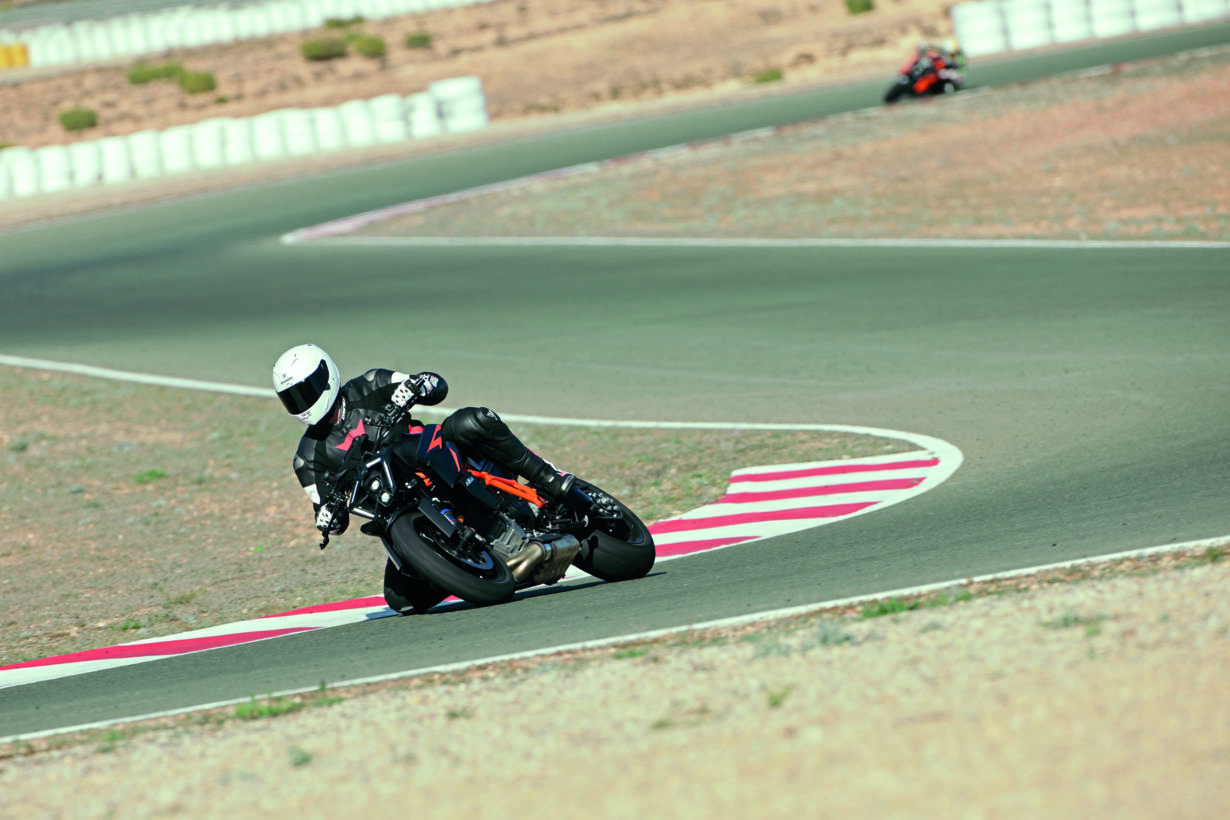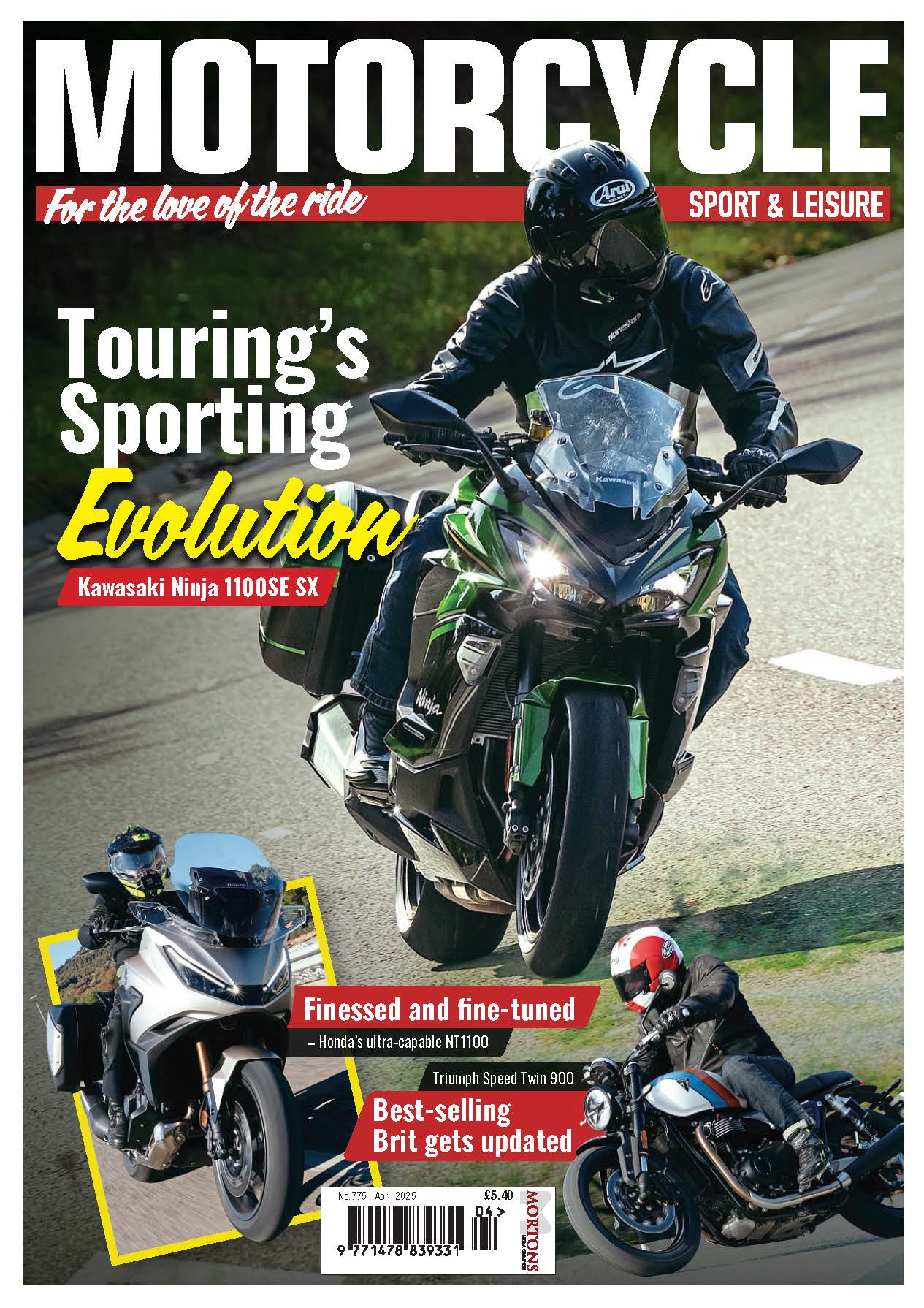Bigger is better as far as KTM’s new Super Duke goes. Johnny Mac gets stuck in with the massive twin on track and gives us his take.
For all its available performance and technical features, the Super Duke absolutely nails the one thing any motorbike must deliver above all else – fun. In the company of bikes with more power, greater tech features and, in some cases, smaller price tags, the 1290 Super Duke R has been able to rise to the top of the pile every time by pulling off one of motorcycling’s hardest tricks – to be a riot to ride and all kinds of naughty, but not at all intimidating or difficult to get along with.

On paper, the 1290’s engine, which is actually 1301cc, should be lumpy and a bit of a handful thanks to the two massive 108mm diameter pistons that thrash around inside it, but the reality is the total opposite. The motor delivers huge torque numbers in all the right places while being as mechanically smooth as a V4.
Enjoy everything MSL by reading the monthly magazine, Subscribe here.
The 1390 gets a capacity increase to 1350cc, which, by virtue of the fact that the actual capacity of the 1290 is bigger than its name and the actual capacity of the 1390 is smaller than its name, means that it gets a 49cc capacity increase. The result of the larger capacity and variable valve timing is a new peak power figure of 187bhp and new peak torque figure of 107lb-ft; for context, a Ducati Streetfighter V4 makes 90lb-ft and the BMW M1000R produces 83lb-ft of torque. The engine is beyond epic, it’s a total masterpiece of engineering, but crucially it’s been developed with the rider in mind instead of a spec sheet.
KTM says that the 1390 Super Duke is 60 per cent different to the 1290, so once you factor in the new cylinder head, new pistons for the new bore size, and different gear ratios for fifth and sixth gears to make them shorter (they were very tall on the 1290), a bigger airbox, bigger fuel tank, and bigger radiator to cope with the extra power, that’s pretty much the 60 per cent KTM is referring to. The rest of the bike is more or less the same as the 1290.
The analogue suspension on the R is updated to the latest WP Apex kit and the electronic suspension on the Evo gets new forks and a whole new set of electronic maps and parameters that can be accessed, including high and low speed damping via the ‘Pro’ screen, which brings me neatly to my ongoing – and only real – bone of contention with the Super Duke…
In order to get all the rider modes, rider aids, the quickshifter/blipper, adjustable engine braking and traction control unlocked – all of which you get as standard on the KTM’s competition – you need to hand over another £1086 if you’re buying the Evo or £850 for the R, which takes the price to £18,849 for the R and £20,685 for the Evo. These are big numbers, and actually cancel out the KTM’s price advantage over its rivals. Without those features all unlocked, the Super Duke actually has a pretty ordinary spec in the tech department, and actually many of those features really add to the overall positive experience of riding it, so you would be mad not to get them ‘unlocked’.
We only got to test the Super Duke on track, so in terms of electronic rider aids it was the best place to play around with a lot of them in the time available. I ended up using the smoother, softer ‘street’ throttle map, adding a load of preload to the rear shock to help the bike grip at full lean (more on that in a bit). I didn’t touch the engine braking, ABS, or damping settings because I really liked the ones that came with the bike in track mode, and I turned down the traction control to its lowest level (again, to help with a lack of rear grip), and anti-wheelie was off just coz wheelies are cool.
On track, it’s instantly familiar and so easy to get along with. The riding position is still spacious and for an upright naked bike, you really feel connected to the front tyre in a way that gives the KTM a sportsbike feel during the turn-in and mid-corner phases of cornering. The brakes are still the same Brembo Stylema caliper and MCS master cylinder set up, which is pretty much the best brake set up that money can buy these days for a production bike. The Michelin front tyre deserves a mention at this point for being stable and passing on really clear feedback while under a lot of stress, and no doubt contributing to the Super Duke’s rate of turn and stability.
We didn’t get to ride the 1390 on the road, which, in fairness, is its natural habitat, but given the fact that the only weakness we’ve ever noted for the Super Duke was on track, it’s great to have had the opportunity to spin a lot of laps on it and come away satisfied.
WORDS: John McAvoy / PHOTOS: KTM






